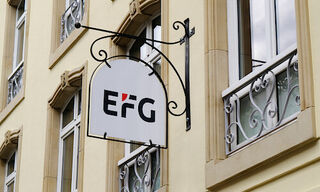Australia BNPL Acquisition Deal Collapses
Australia-based Latitude Group has terminated its deal to acquire Humm’s buy-now-pay-later (BNPL) unit.
In what was described as a mutual agreement, digital payment player Latitude and Humm agreed to terminate the acquisition of Humm Consumer Finance (HCF), the BNPL unit, according to filings to the Australian Securities Exchange (ASX) Friday. The companies cited «the current major disruption in financial markets.» Financial markets have been roiled recently by a toxic brew of higher interest rates, Russia's invasion of Ukraine and inflation, partly due to continued supply-chain disruptions. Both companies are listed on ASX.
Humm said Friday it would review HCF’s strategic direction to focus on core products and restore profitability. Latitude said BNPL was less than 1 percent of its revenue and receivables, and the company’s organic volume growth was good, and remained profitable.
The market didn’t take the news well. Shares of Humm were down nearly 15 percent at 1:00 p.m. local time, while Latitude’s shares were flat, after trading down more than 4 percent earlier in the session. Latitude’s shares are down nearly 17 percent over the past five trading days.
«Sub-Scale»
The termination came just two days after Humm released a statement lauding the deal as a «compelling value proposition.» That statement, filed to ASX, noted the BNPL business was not profitable and that HCF wasn’t growing.
«As a standalone, sub-scale business, the majority directors believe that HCF faces significant macro and structural headwinds, and the entire BNPL sector is under pressure,» Humm said Wednesday, noting the BNPL business reported a cash net loss of A$9.7 million (US$6.82 million) for the six months ended 31 December 2021.
Don’t Believe the Hype?
Despite bullish predictions for growth in BNPL globally, the hype doesn’t seem to be panning out.
Grant Halverson, CEO for financial services at McLean Roche, a consultancy focused on financial services, said in an article he posted to LinkedIn earlier this week that BNPL players are in «serious trouble.» One key factor: the rapid rise in funding costs, he said. Central banks globally have been hiking interest rates to tame runaway inflation. Halverson noted BNPL apps had global sales of US$145 billion in 2021, but lost around US$100 billion of investors’ money that year, and bad debts run five times higher than the U.S. credit card industry.
Others have also piled on.
Scott Galloway, a professor of marketing at NYU Stern, said in an opinion piece published in New York Magazine that for BNPL, «Any hope of profitability depends on overextended consumers somehow making their payments and continuing to mash the BUY button.»
BNPL’s growth may be déjà vu for the microfinance blowup a little over a decade ago. At the time, microfinance shifted from the provenance of careful, targeted non-profit loans aimed at alleviating poverty, toward private equity funds taking advantage of the relatively high lending interest rates to blanket emerging markets with consumer loans. In some parts of India, that had spurred a payment strike after low-income borrowers became buried in high-interest debt.
Walking Back Bullish Estimates
The growing concerns over the BNPL sector mark a stark comparison to previous bullish predictions. In March 2021, technology research firm CBInsights cited projections the global BNPL industry would grow by 10 to 15 times its then volume to more than US$1 trillion in annual gross merchandise volume.
Not all the data was rosy: In Singapore, a survey by consumer research firm Milieu Insight, conducted in October 2020, found just over half of respondents who were unemployed and not looking for a job used BNPL, a higher percentage than the national total.



























